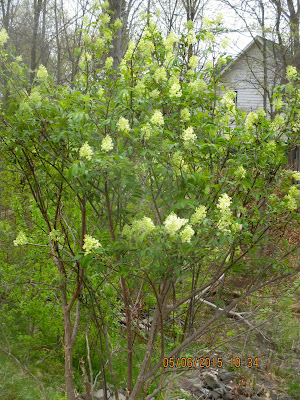...RED ELDERBERRY FRUIT
Tuesday, 8:00 AM. 55 degrees F at the ferry dock, 62 on the back porch. Wind ENE, light to moderate, sometimes gusty. The sky is overcast and the humidity is 89%. The barometer stands at 29.95" and is more or less steady. The wind off the lake renders the downtown waterfront much cooler than up on the bluff. It will be a damp, cool day.
The red-berried elderberry in the back yard, Sambucus pubens, in the Honeysuckle (Caprifoliaceae) Family is bearing fruit. This species, which replaces the common elderberry, Sambucus canadensis, in the north, has beautiful scarlet berries, but does not seem to bear heavily enough to make a real landscape impact, although it does bloom pretty nicely. The berries do not stay on the plant long, but are eaten by birds as qucikly as they ripen. The berries have a rather crisp, nutty, acidic flavor, but they are small and hardly worth the effort to pick them (never eat wild fruit unless you are absolutely certain of identification and edibility).
As I am looking out the window at the large elderberry shrub in the back yard it is literally shaking from robins flying in and out, gorging themselves on the berries.
This shrub can grow very large, tolerates a wide variety of soil and moisture conditions, and can be invasive in the smaller landscape. Once established it is very difficult to eradicate, so us it with caution. It is only in our back yard because it grew up in a rock wall and I couldn't dig it out, or kill it by cutting it back severely.
After a while I decided that anything so tenacious deserved to live, but I have to seriously prune it back every year to keep it from taking over the garden. I find it to be something between an attractive nuisance and a botanical curiosity.
|







No comments:
Post a Comment